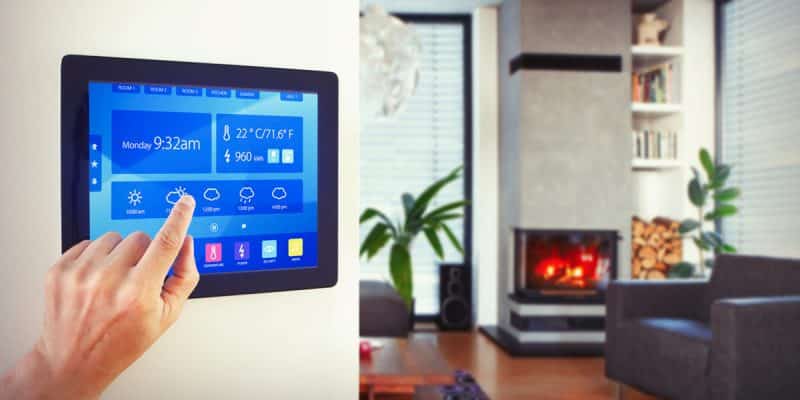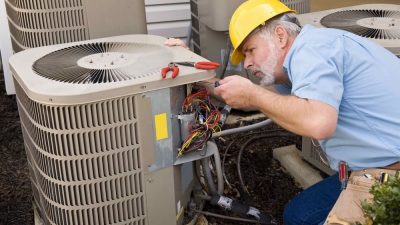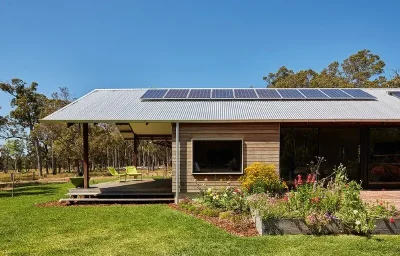
Technology has revolutionized every aspect of our lives, including the way we live in our homes. From smart appliances to automated systems, modern technologies integrated into households bring numerous benefits that enhance daily life. This article explores how these innovations are contributing to the modern home transformation and why you should consider adopting them.
Embracing Smart Home Innovations
In recent years, the integration of smart technologies has become a central element in the design of modern homes. It’s no longer enough for a new house to have just an attractive architectural design and practical functionality; now, integrating smart technologies is essential to meet the contemporary demands of homeowners.
A recent survey reveals that 69% of US households have at least one smart home gadget, and by 2023, 53.9% of US homes will be automated through the smart home industry. These statistics clearly reflect the growing desire for enhanced security and comfort in modern homes. Smart technologies are not just convenient additions but essential components that define the standards of new constructions.
Transforming Daily Life
Convenience and Automation
Home automation systems have revolutionized the way we perform daily tasks, making them simple and efficient experiences. For example, smart lighting does more than just turn lights on and off; it allows precise control of ambiance, energy savings, and brightness adjustment through voice commands or mobile apps. This not only adds a level of comfort but also promotes more responsible energy use.
Smart thermostats learn your temperature preferences and adjust accordingly to optimize energy use. Imagine setting your coffee maker to brew fresh coffee as soon as you wake up or having your vacuum cleaner tidy up the floors while you’re at work. These conveniences save time and effort, giving you more freedom and flexibility in your daily routine.
Advanced Security Solutions
Security is a crucial aspect of smart home technologies. Integrating smart security cameras and video doorbells offers an enhanced level of safety, allowing continuous monitoring of the property. These devices often come with advanced features such as motion detection, facial recognition, and real-time notifications, all accessible from a smartphone. This enables homeowners to stay informed about what’s happening around their property, no matter where they are.
Smoke and carbon monoxide detectors send notifications directly to your phone, allowing you to act quickly in case of an emergency. A survey shows that 60% of smart device owners feel safer because of these technologies.
Energy Efficiency
Modern household devices are designed to be energy-efficient, helping you save on utility bills and reduce your carbon footprint. Smart thermostats optimize energy use by learning and adapting to your schedule. Additionally, energy-efficient appliances like refrigerators and washing machines consume less power without compromising performance.
A further example of energy efficiency is the use of inverter generators. These are quieter and more fuel-efficient compared to traditional generators, providing a reliable power source for smart devices during power outages.
Enhancing Home Spaces
Kitchen and Bathroom Upgrades
Kitchens and bathrooms have significantly benefited from smart technology integration. Smart refrigerators can monitor food supplies, suggest recipes, and even order groceries, reducing food waste and adding convenience. In bathrooms, digital showers allow precise control of water temperature and flow, turning daily routines into personalized and enjoyable experiences.
Entertainment and Wellness
Smart technologies have also transformed entertainment and wellness spaces in modern homes. Smart home theaters offer high-quality cinematic experiences with 4K projectors and surround sound systems. Fitness areas are equipped with internet-connected equipment that allows performance monitoring and access to virtual workouts. These innovations contribute to creating a holistic and healthy living environment tailored to modern needs.
The Growing Market and Adoption Rates
The United States leads the world in smart home automation, with over 60.4 million US households using smart home devices as of 2023. American smart homeowners spend an average of $1,172 on their tech home devices. By 2024, there will be over 400 million smart homes worldwide, with the number of smart homes in the global market reaching 478.2 million by 2025.
Smart speaker penetration is also on the rise, with a projected growth rate (CAGR) of 21% in 2023, and the global market share of smart speakers is expected to reach $9.7 billion by 2023. Furthermore, over 1 billion people in the US engage in some form of voice search activity at least monthly, highlighting the increasing integration of voice-activated technologies in daily life.
Between 2022 and 2030, 5.5 million Matter-compliant smart home devices are expected to ship, showcasing the rapid expansion and adoption of standardized smart home technologies. Promoted by the Connectivity Standard Alliance (CSA), Matter is an industry unifier—an open-source standard for connectivity that enables seamless communication between IoT devices across different platforms, regardless of their manufacturers. This protocol will make it easier to manage all smart home ecosystems from a single application.
Overcoming Hesitations and Embracing Benefits
Despite the evident advantages, some homeowners remain hesitant about adopting smart technologies. Common concerns include perceived high costs, a lack of clear necessity, and unfamiliarity with the technologies. According to a survey, 45% of respondents consider the price of products or subscriptions too high, while 44% do not see the need for integrating smart technologies into their homes. Additionally, 34% of respondents say they do not know enough about these technologies, causing reluctance to adopt them.
Educating Homeowners
To encourage the adoption of smart home technologies, it is crucial to educate homeowners about their benefits and functionalities. As the market diversifies, initial costs become more accessible, and the range of options expands. Homeowners need to understand how these technologies can reduce anxiety, improve energy efficiency, and offer tangible benefits that justify the investment.
Education can help bridge the knowledge gap, addressing concerns arising from unfamiliarity. Providing clear information about the practical benefits of these devices—how they can help reduce damages, simplify daily routines, enhance security, and offer significant savings—can change perceptions and encourage the adoption of smart home technologies.
Conclusion
The modern home transformation through the integration of smart technologies offers a mix of convenience, efficiency, safety, and sustainability. These innovations transform the way we live, making daily life easier and more connected. With a smart home infrastructure, your house will be ready to seamlessly integrate future technological advancements, making it more adaptable and prepared for the future.








